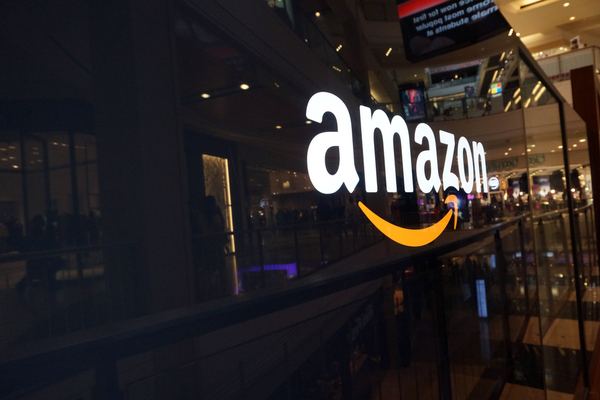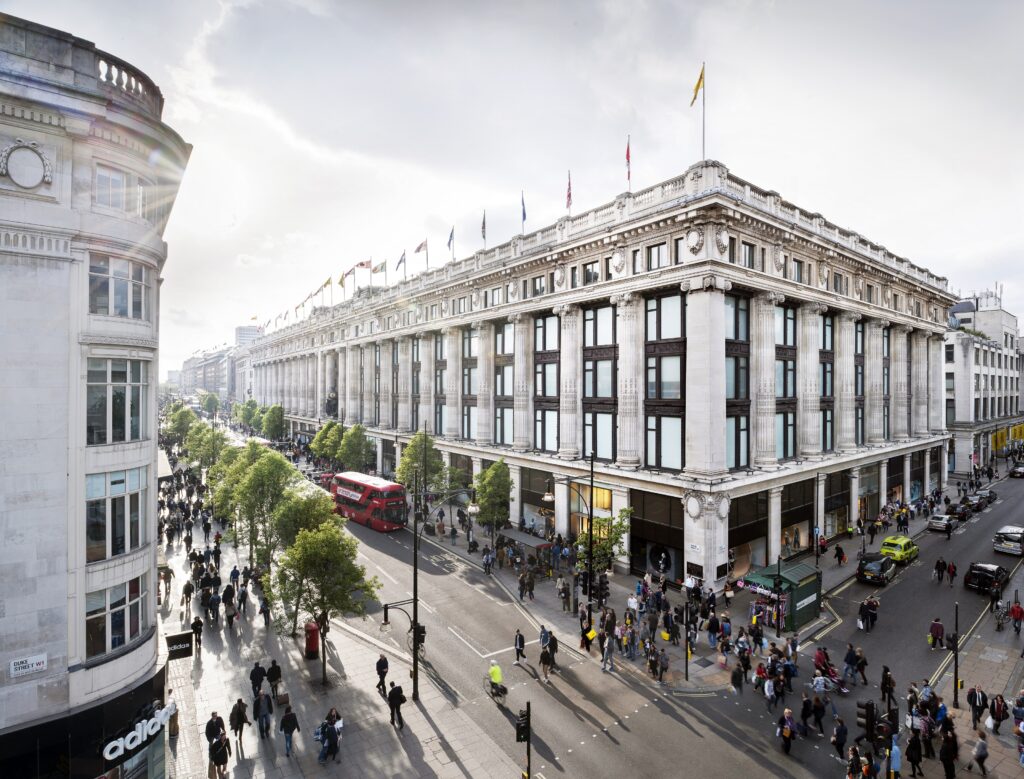Earlier this month, the Wall Street Journal first reported that Amazon was planning to open department stores after years of taking the competition online with the very same traditional brick-and-mortar retailers.
The news came after Amazon eclipsed Walmart in overall sales to become the largest retailer outside of China. And although the online giant already operates physical retail stores, including its cashless convenience stores AmazonGo, it is now set to make a mark on the department store sector.
Eleonora Pantano, retail expect and marketing lecturer at the University of Bristol, explained what could have prompted this venture.
“Amazon certainly identified an opportunity to expand its channels for shopping,” she told Retail Gazette.
“Limiting the retail opportunity to the digital/online channel would miss the potential offered by the in-person/physical shopping experience.”
Pantano added that while many units in city centres remain empty post pandemic, and retailers, policy makers and marketers try to identify the best solutions to limit the decline of high streets, Amazon has recognised an opening.
“The preliminary attempt to ‘move offline’, with some small physical stores – that is, Amazon Go in London, UK – attracted consumers’ attention, and shopper flows so it makes sense for them to build on and invest more in this,” she explained.
Eddie Capel, chief executive of the supply chain experts Manhattan Associates, said: “This latest move into physical retail space validates what we’ve been saying all along, that physical stores are not going away any time soon and even Amazon recognises the value of providing their customers with a true omnichannel experience.”
Over the course of the Covid-19 pandemic and multiple national lockdowns, many heritage department store retailers were hit, including Debenhams which permanently closed all its stores after its online assets were sold to the Boohoo Group at the start of the year. Meanwhile, John Lewis shut down scores of stores, Marks & Spencer closed down more full-line and clothing & home stores under its turnaround scheme, and House of Fraser is still undergoing a restructure as part of Fraser Group’s wider elevation strategy.
But with the introduction of a new Amazon department store on the high street, could this revive the sector?
Melissa Minkow, retail industry lead at the digital consultancy CI&T, said the department store retailers that have been able to survive this rough period will likely borrow some best practices from Amazon’s efforts, while learning from the pitfalls.
“I wouldn’t say this move will revive the sector as a whole, but smart department retailers will learn from both the good and bad that come out of this experiment because Amazon is willing to take risks a heritage sector wouldn’t typically take,” she explained.
“Amazon has witnessed several department stores suffer and is confident it can do better”
Mark Geden, head of strategic planning at the agency Tribal Worldwide, added that increased footfall could increase investor confidence and that the new, novel and possible innovative formats that Amazon could launch might drive renewed interest and intrigue back to the physical retail destination.
“More people mean more opportunities for other retailers in areas local to each site. That said, we know Amazon isn’t afraid of putting its competition out of business so we shouldn’t assume it’s going to start playing nicely now,” he warned.
While it is unclear what exactly an Amazon department store could look like, one can assume it won’t emulate any of the current models of traditional department store retailers.
Pantano said that from what has been seen before, such as Amazon Go, one could predict the new Amazon department store might strongly integrate use of technology – and not just limited to apps and contactless payment systems.
“For instance, Amazon might provide new multi-sensory experiences, deploying augmented and virtual reality,” she added.
“Amazon may seamlessly integrate the online experience with the offline/in-person one, by providing a new hybrid place for shopping.
“Traditional retailers are still introducing technology in their point of sale, but holistic innovation is lacking.
“Amazon will push them to transform faster and develop new modalities to engage with customers.”

As the retail industry waits to see exactly what an Amazon department store would look like, should existing retailers to be looking to revamp their business models in anticipation?
“Amazon’s announcement should serve as a wakeup call for all retailers that they need to go all in on omnichannel,” Capel said.
“The primary defence retailers had is about to be breached; to survive this next phase in Amazon’s evolution they need to prepare their systems and processes for a new marketplace dominated by those brands that are able to deliver seamless, personalised shopping experiences simultaneously across physical and digital channels.”
Hariharan, former Amazon manager and current chief executive of CommerceIQ, added: “To survive and thrive current department stores will have to manage three metrics successfully – price, selection and availability – as Walmart and Best Buy already have, for example.”
Hariharan also explained that they will need technology to drive the right assortments, and mechanisms to ensure that the right products are in stock to give the consumer a complete omnichannel experience. So that if a consumer walks into a store, they should know they are getting the best price and that the product is on the shelf.
For retailers such as John Lewis and Selfridges, Minkow said they would be forced to rethink how convenient and seamlessly shoppable they are for consumers. She explained that some of the reasons department stores have struggled has been due to unpredictable inventory, staffing shortages and non-intuitive merchandising.
Marcel Hollerbach, chief innovation officer at Productsup, added that John Lewis should see Amazon’s entrance to the physical market as a reason to improve its own in-store services, driving more customers into stores by ramping up its click-and-collect and in-store returns initiatives.
“A combined online and offline strategy will ensure retailers like John Lewis can mitigate any challenges posed by Amazon’s physical offering and the subsequent commerce anarchy that is duly set to follow,” he told Retail Gazette.
Justin Biddle, UK Lead at Shopware, said: “John Lewis and Selfridges are suffering from legacy issues and this will be their main focus to resolve now.
“John Lewis has a strong yet shrinking retail presence and its investment in its digital operations has still not been enough to balance sales when they are still struggling with heavy real estate costs.”
“Amazon is no stranger to the brick and mortar game”
He explained that heritage retailers should focus on establishing the right tech infrastructure that allows for flexibility in the face of complexity to grow sales online and can act as a springboard for offline sales too if they want to compete against Amazon.
While department store retailers will be expected to pay attention to the news that Amazon is entering their market, there’s no doubt that its entrance will have an effect on the wider retail sector.
Sam Statham, head of customer experience at cloud-based fulfilment provider, fulfilmentcrowd, said it would be interesting to see how the proposed Amazon department stores impact smaller and medium-sized retailers – the very businesses which have been so important to the success of Amazon’s online marketplace.
“Large bricks and mortar Amazon stores could offer SME retailers a new platform to increase sales,” she explained.
“However, they could also inadvertently accelerate growth trends in other digital marketplaces such as Shopify.
“The physical department store model requires high product volumes at low costs and huge economies of scale to maximise margins.
“This may not be feasible for SME retailers and risks squeezing them out. If this happens, it could see this segment of smaller retailers shifting from Amazon, as they concentrate efforts on channels that they feel are more suited to their business models.”
Pantano said the effects won’t be limited to retailers operating in the city where Amazon will open the department stores and said its impact will be broader for the entire sector.
“Indeed, Amazon would introduce a new business model, and new shopping experience for consumers which may prove effective and successful,” she said.
“As a result, Amazon could extend to more cities, increasing its dominance in the sector. This means all department store retailers will need to improve their models, revisit their offer and better understand/predict consumers’ needs to thrive in this new competitive scenario.
“Sticking to traditional models has already led to the closure of big name department retailers and the decline of many others, so it’s very much a case of them needing to adapt and prioritise the consumer at speed.”
Click here to sign up to Retail Gazette’s free daily email newsletter

















